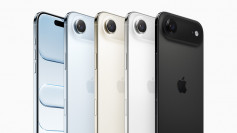The ISOCELL HP1, a 200-megapixel smartphone camera sensor from Samsung, was officially introduced on September 2 by the South Korean phone maker.
According to The Verge, the whopping 200-megapixel phone camera sensor is by far the highest resolution snapper for a mobile phone that has ever seen the light of day.
The Samsung ISOCELL HP1 arrives only days after reports surfaced that the Xiaomi 12 Ultra, the Chinese tech giant's forthcoming flagship, will include a 200-megapixel camera sensor. It will be a significant upgrade from the Mi 11 Ultra's predecessor's 50MP primary camera.
To put things in context, the Samsung Galaxy S21, as well as the earlier S20, only had a 108MP primary camera sensor.
The camera on the S21 Ultra is already excellent, with a superior optical zoom that allows you to capture images that few phones can match. However, it was not a significant improvement over the S20. Both had 100x zooms, 8K video, and 108-megapixel sensors.
The S20 Ultra was a significant step forward, yet the S21 Ultra just refined it somewhat. Already, speculations say that the S22 Ultra will have a 200-megapixel sensor and vastly improved zoom technology.
Samsung refers to the pixel-binning technology in the HP1 as "ChameleonCell." The four-by-four 12.5-megapixel mode is meant for low-light use, but it can also shoot full 200-megapixel resolution images or 50-megapixel shots using a two-by-two binning approach.
The HP1 can also capture 8K footage thanks to the two-by-two binning mode. Samsung claims it can capture 8K without cropping, despite the fact that standard 8K (7,680 x 4,320) is less than 50 megapixels.
In addition, Samsung is releasing a new sensor called the ISOCELL GN5. It has a 50-megapixel sensor with 1.0μm pixels, and Samsung boasts it is the first sensor with 1.0μm pixels to incorporate its Dual Pixel Pro technology.
That makes it seem like a scaled-down version of the 1.4μm-pixel GN2, which was the largest phone camera sensor available when it debuted on Xiaomi's Mi 11 Ultra earlier this year.
Although Samsung has not stated when either new sensor will be mass-produced, samples are currently available for phone manufacturers.
Both the HP1 and GN5 sensors are available for smartphone manufacturers. Samsung has yet to reveal which smartphones will be the first to use these sensors.






